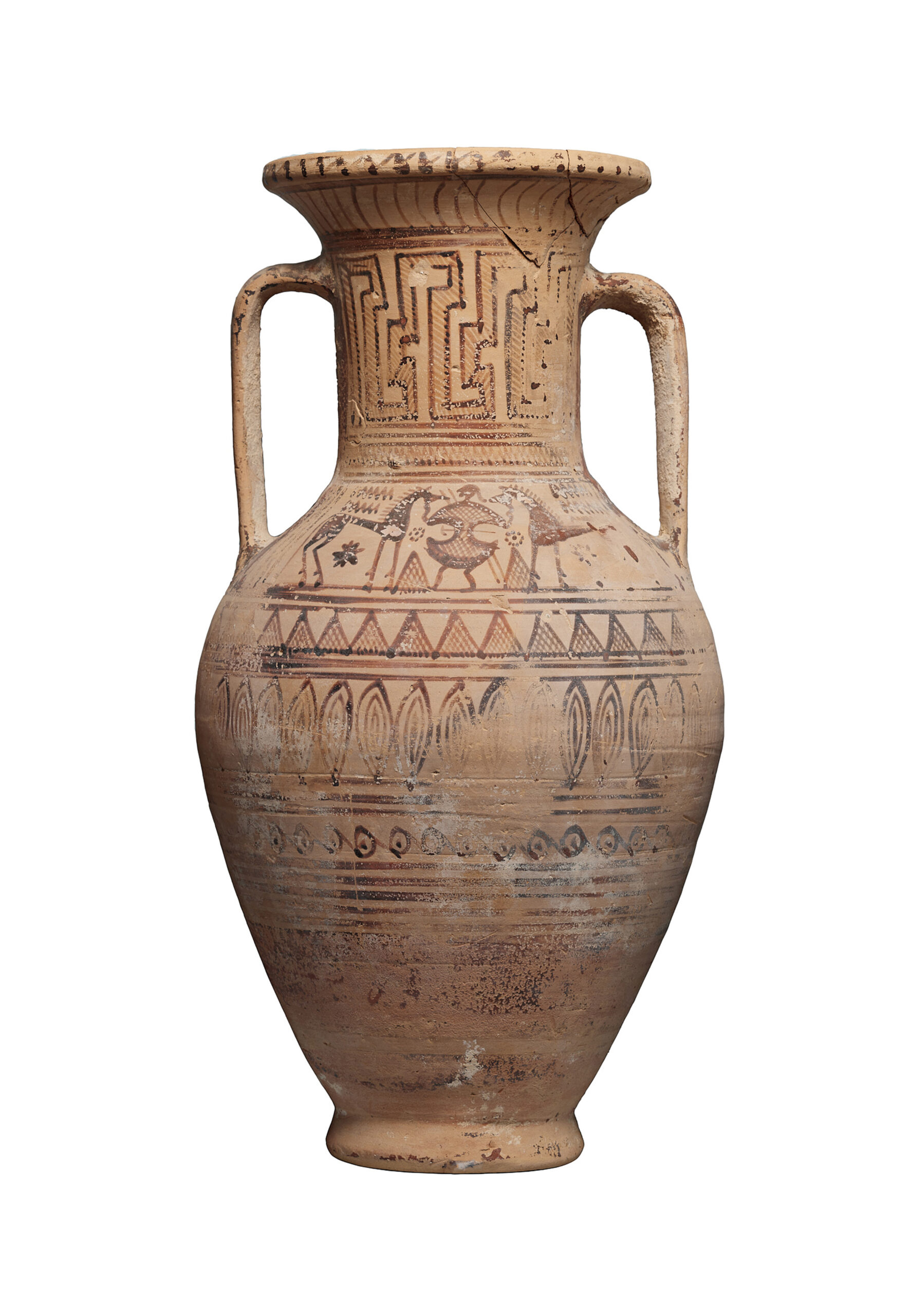

Geometric amphora
For the greater part of the Geometric period, vase decoration was aniconic. The surface was covered with geometric motives, and only rarely did the form of an animal or human made its appearance, usually in an isolated frame. Yet, just before the mid-8th c. BC a gradual shift towards figured compositions started. The shift is mostly noted on vase-types which were used in funerary rituals, such as amphorae and kraters. Such vases, in addition to being used in burial ceremonies, were often placed as markers above the graves.
The illustrated amphora is dated around 730 BC and bears a scene of a warrior holding horses on the shoulder. The warrior has a helmet, “Dipylon” shield, a sword in the waist and two spears. This type of gear is known from several vases of the Late Geometric and Early Archaic periods, and may suggests the standardization of military equipment at this phase of ancient Greek history. The same type of gear (with different shield) is also known from later vase paintings depicting a group of hoplite (i.e. the phalanx). Here, the warrior stands alone holding two horsed from the bridles. He may represent a mythical figure (a god or here) or simply symbolize the aristocratic statues of the dead (horse breeding was expensive and could only be undertaken by members of the upper social strata).
PUBLICATION
– Brouskari M.M. 1979. ‘Collection Paul Canellopoulos (XIV). Vases géométriques’, Bulletin de correspondance hellénique 103, 1979, 429-460, esp. 438-441.
